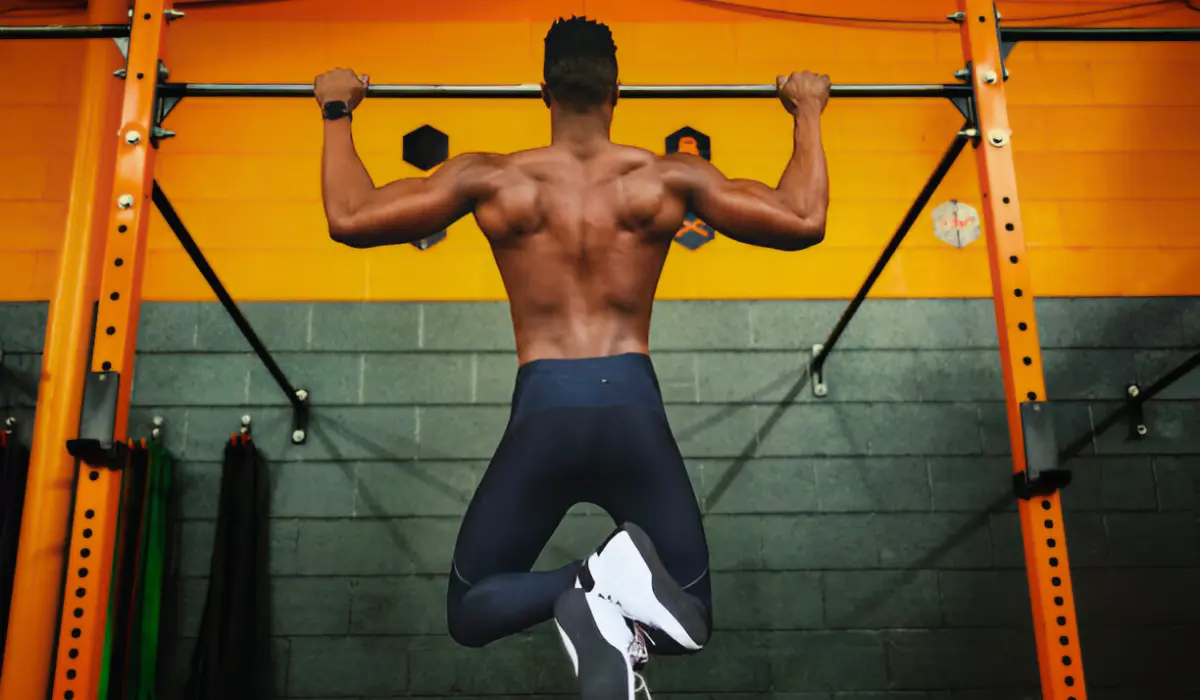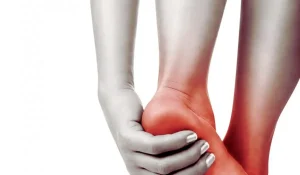A pull-day workout helps to enhance the strength and growth of many major muscles in the upper body. As the name suggests, it targets the lats, traps, rear delts, lower back, biceps, and grip, which are the pulling muscles.
What Is A Pull Day Workout?
A pull day, as the name suggests, is a workout in which the concentration is on pull exercises and the muscles used in them. This usually entails isolation workouts for the pull muscles, like bicep curls and face pulls, and compound pulling movements like deadlifts, lat pulldowns, and bent-over rows.

On the other hand, a leg workout targets the lower body, while a push workout targets the chest, shoulders, and triceps through pushing exercises.
As with the push-pull legs program, there are instances when push, pull, and leg training are combined into one fitness regimen.
Top 8 Pull Exercises For Pull Day
1. Pull-ups
One of the best workouts for developing a broad, robust back is pull-ups. Many lifters begin their pull session with this essential exercise. During this exercise, the muscles of the back and arms need to work together to move the body upwards. People who cannot do pull-ups can find a pull-up assist machine or use a brand to ease the movement.
How to perform pull-ups?
- Begin by gripping a pull-up bar with the knuckles facing towards the face and fully extending the arms.
- Bend the knees and cross the feet behind.
- Pull up until the chin reaches above the bar.
- Lower back to the starting posture.
- Repeat the exercise for the desired number.
2. Deadlifts
The most well-liked compound exercises among bodybuilders due to their effectiveness are deadlifts. The bulk of the back, leg, and even core muscles are used when performing a deadlift correctly. It is considered a need for pull day because it works so many different muscle groups. Deadlifting, however, requires caution. If lifted too heavily or performed poorly, it might cause severe back strain.
How to perform deadlifts?
- To begin, stand with the feet shoulder-width apart and the knees slightly bent.
- Holding the bar, bend the hips and knees, and place the hands about shoulder-width apart.
- Raise the bar off the floor and stand up while maintaining a straight back.
- After the required number of repetitions, lower the bar back to the starting position.
3. Lat Pulldowns
The latissimus dorsi, or lats, the muscles on the sides of the back, can be targeted in the lat pulldowns. The lats provide the V taper. It is highly recommended for people who aim to build a strong and detailed back.
How to perform lat pulldowns?
- With the feet flat on the floor and the knees bent, begin by sitting on a lat pulldown machine.
- With the hands shoulder-width apart and the palms facing away, reach up and grab the bar.
- Pull the bar down to the chest by keeping the elbows tight and the back straight.
- Return the bar to its original position slowly, then repeat the action as much as required.
4. Barbell Rows
Another great exercise that needs to be included in a pull-day workout is barbell rows. A range of grip widths can be experimented with if someone wants to target different muscle groups. While a smaller, underhand grip concentrates the stress in the biceps and lats, an overhand hold with shoulder width works the upper back.
How to perform barbell rows?
- To begin, place the feet shoulder-width apart and flex the knee slightly.
- Grip the bar with the hands shoulder-width apart while bending at the hips.
- Lower the torso until it is parallel to the floor while maintaining a straight back.
- While keeping the elbows tucked in, row the bar up to the abdominals.
- Repeat the required repetitions after returning the bar.
5. Dumbbell Rows
Bent-over barbell rows and dumbbell rows share a common target muscle group. An arm or two dumbbells at a time can be used for this exercise. It’s important to pay attention to technique if decide to work both arms together. It may be harder to maintain control of the motions due to the additional weight.
How to perform dumbbell rows?
- Start by placing one knee on a bench and placing the feet hip-width apart.
- With a dumbbell in each hand, bend the hips. For support, rest the other hand on the bench.
- Lower the torso until the body is at a 45-degree angle while maintaining a straight back.
- Keeping the elbow close to the side, raise the dumbbell to the chest.
- Once you’ve completed the required repetitions, lower the dumbbell back to its starting position.
6. Pullovers
Another pull-day workout is the pullovers. To stretch the lats, a dumbbell can be used while performing this exercise. It can also be done with a cable bar on the cable machine.
How to perform pullovers?
- To begin, place the feet flat on the floor and bend the knees while resting on a bench.
- With the hands about shoulder-width apart and the palms facing away, hold the dumbbell.
- Lift the weight above the head while maintaining a straight arm position.
- After lowering the weights behind, bend the arms at the elbows.
- Repeat the required repetitions after raising the weight back over the head.
7. Dumbbell Shrugs
A few sets of dumbbell shrugs can be added to the routine to work the trapezius muscles that run from the base of the neck to the middle of the back. When performed correctly, they will cause the trapezius muscles to expand because they are so effective at activating them.
How to perform dumbbell shrugs
- To begin, place the feet hip-width apart and bend the knees just a little bit.
- With the curled fingers toward the sides of the thighs, hold a dumbbell in each hand.
- Raise the shoulders to the earlobes while maintaining a straight arm position.
- Repeat the required number of repetitions after lowering the shoulders.
8. Face Pulls
The back portions of the shoulder muscles, known as deltoids, are a wonderful place to focus with cable face pulls. Furthermore, one should be aware that face pulls are an excellent means of correcting posture. These are best added towards the end of the workout.
How to perform face pulls?
- To begin, place the feet hip-width apart and bend the knees just a little bit.
- Hold the cable with the hands shoulder-width apart and the palms facing away.
- Keeping the elbows close to the sides, pull the cable in the direction of the face.
- Carefully move the cable back to its initial position and repeat the exercise.
Conclusion
A pull-day exercise program is a thorough regimen designed to increase the size and strength of the lats, traps, rear delts, lower back, biceps, and grip, among other upper body muscles. Incorporating the different pull exercises will help to attain good posture and muscular activation. It will also help to balance muscular growth and general upper-body strength.







